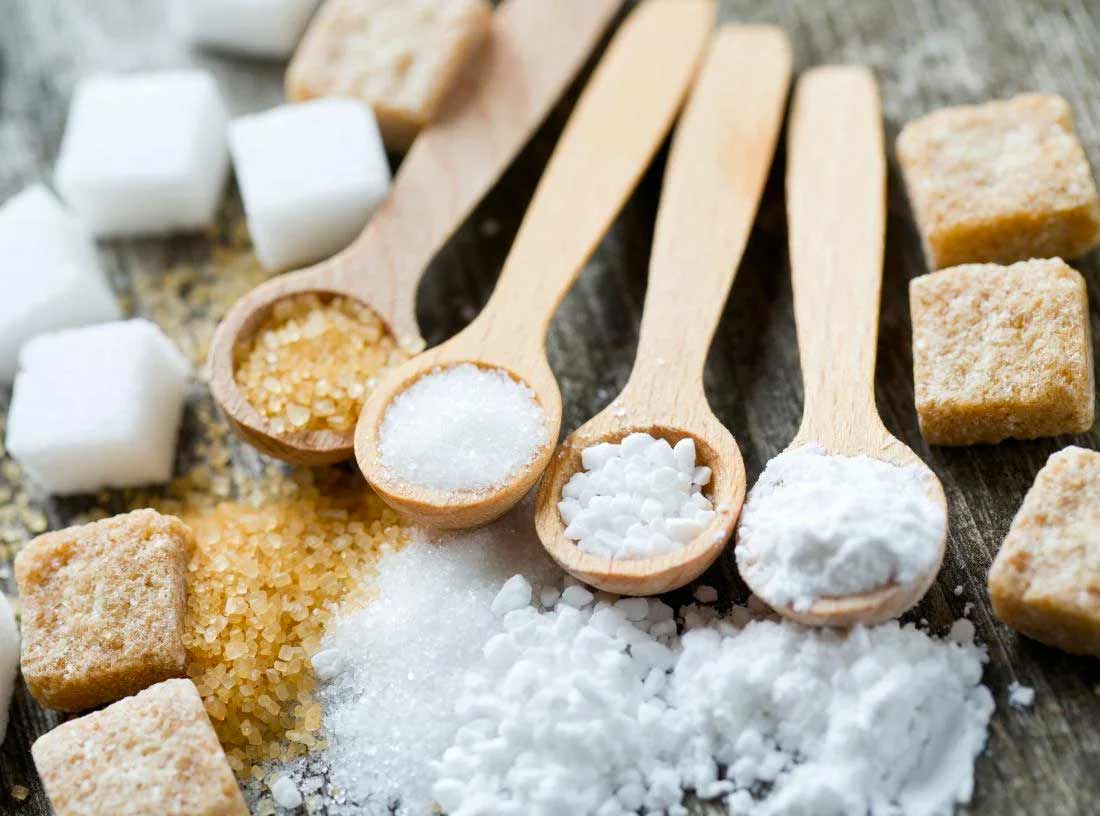We are born with a preference for sweet tastes. However, sugar carries calories without any fiber, protein, fat, vitamins or minerals. Sugar is basically empty calories.
Reading the Nutrition Facts Label can be confusing. Sugar can be found in a wide range of foods. In 2018, the Nutrition Facts Label was updated to include “added sugars.” This will appear below the carbohydrate listing. The label now has total sugars and added sugars.
Naturally occurring sugars come from fruit (fructose) and dairy (lactose). Vegetables and grain foods can also have a small amount of naturally occurring sugar.
Where do added sugars come from? Check out the ingredient list. Look for the word sugar, syrup, agave, molasses, juice, beet sugar, brown sugar, turbinado and honey. Also look for words that end in “-ose” like maltose, glucose or sucrose. Sucrose is table sugar. It is 50 percent fructose and 50 percent glucose.
Check out the following chart to see what a couple of foods show regarding added sugars:
| Food | Total Grams of Carbohydrate | Total Grams of Sugar | Grams of Added Sugar | Sugar containing ingredients |
| ½ cup Unsweet Musselman’s applesauce | 12 gr | 11 gr | 0 grams | Apples |
| ½ cup Original Musselman’s applesauce | 21 gr | 18 gr | 7 gr | Apples, sugar |
| Dannon Light & Fit Greek strawberry yogurt, small container | 8 gr | 6 gr | 1 gram | Milk, fructose |
| Noosa strawberry Greek yogurt, 5.3 oz | 14 gr | 12 gr | 8 gr | Milk, fruit, cane sugar and wildflower honey |
| Welch’s 100% Grape juice, 8 ounces | 38 gr | 36 gr | 0 gr | Grape juice concentrate |
To put into perspective, four grams of sugar is one teaspoon of sugar. So, the Original Mussman’s applesauce and Noosa yogurt have about two teaspoons of sugar ADDED to those little containers. The Welch’s grape juice has zero grams of added sugar. The total sugar is 36 grams, which is nine teaspoons of sugar! That’s the same amount in 12 ounces can of regular soda. So, watch the labels carefully. No added sugars aren’t all it’s cracked up to be.
How much sugar is okay to have? Your dietitian will assess your activity level, blood sugar readings, body composition and tolerances to help you find a healthy carbohydrate goal to work into your eating. Training for a 10K has different nutrition requirements than being a desk jockey.
You now have some tools to hunt down the added sugars in our foods and beverages. Happy hunting!
Information provided by Rene Norman, RD/LD, bariatric dietitian.

